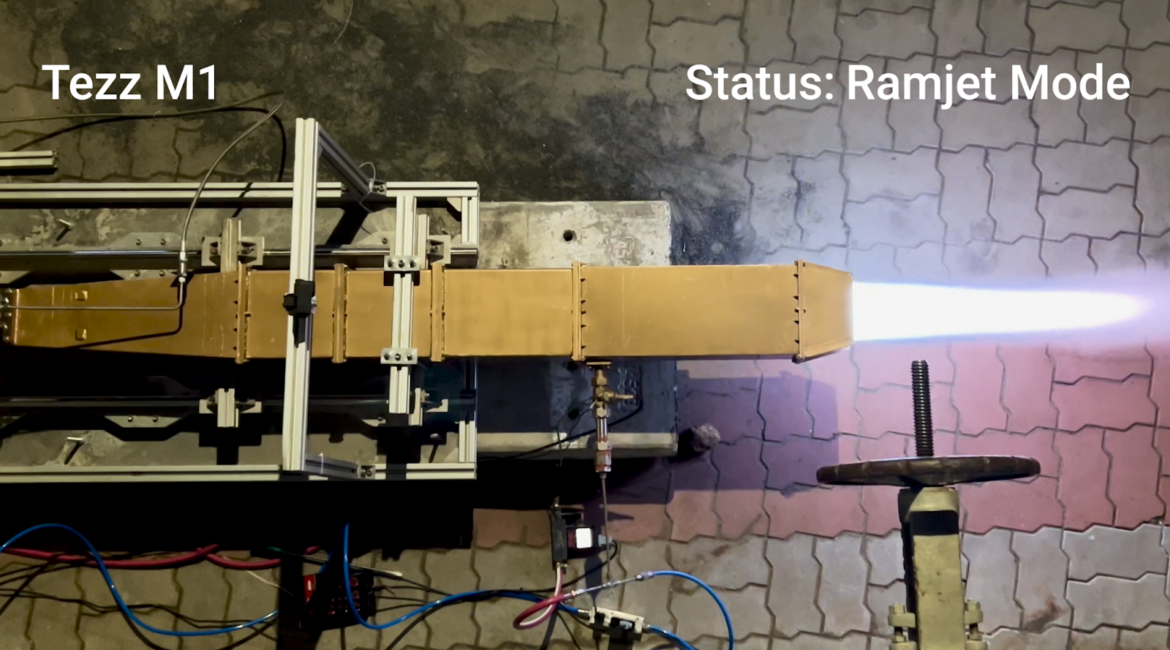Hyprix Aviation, having developed India’s first private supersonic ramjet engine, is now working on advanced ramjet artillery shells for extended-range strikes.This development aims to boost India’s self-reliance in defence technology and reduce dependency on foreign defence technologies.
India’s private defence manufacturing sector is gaining momentum, with homegrown companies entering areas traditionally dominated by state-run agencies and foreign defence giants. One notable development is from Bengaluru-based Hyprix Aviation, founded by Devmalya Biswas (23) and Divyanshu Mandowara (22), which has become the first private Indian company to develop a liquid-fueled supersonic ramjet engine—a propulsion technology critical for next-generation missiles and high-speed aerial platforms.
Hyprix recently achieved a significant technological breakthrough with its supersonic ramjet engine, Tezz, which was successfully tested in January 2025 at the National Centre for Combustion Research and Development (NCCRD) at IIT Madras. Capable of operating at speeds between Mach 2 and Mach 4, Tezz marks a milestone in India’s efforts to reduce dependence on imported defence technology. Ramjet engines, which sustain supersonic speeds by compressing incoming air for combustion without mechanical compressors, are integral to modern missile and high-speed aerospace systems. The development of Tezz signals the private sector’s growing capabilities in advanced propulsion technologies, a field previously limited to government research institutions and foreign defence contractors.
The engine offers critical advantages over traditional rocket-powered systems, including greater efficiency, extended range, and sustained supersonic speeds, making it highly suitable for supersonic missiles and high-speed reconnaissance platforms. Hyprix’s work in propulsion systems extends beyond defence, with the company also exploring applications in next-generation aerospace platforms, highlighting its broader technological ambitions in both sectors.
Building on its success with Tezz, Hyprix is now developing Kira M1, a solid-fueled ramjet-propelled 155mm extended-range artillery shell designed to address India’s long-range artillery needs. Unlike the liquid-fueled Tezz, which is suited for missiles and aerial platforms, Kira M1 uses solid-fueled ramjet technology optimized for artillery systems. Artillery capabilities are a key focus for the Indian armed forces, as current domestic production of 300,000 shells annually falls well short of the estimated wartime requirement of 1.8 million shells. Technologies such as Kira M1 have the potential to fill this gap, providing a homegrown, high-performance alternative to imported long-range artillery shells.
Kira M1 incorporates solid-fueled ramjet propulsion, enabling it to travel nearly four times farther than conventional 155mm artillery shells. The system is also designed with AI-guided navigation, enhancing precision and reducing collateral damage—features that are increasingly vital for modern warfare. The development has already drawn the attention of key stakeholders, with Hyprix currently in discussions with the Army Design Bureau and the Artillery Directorate for vested development of the system. These engagements highlight the growing alignment between private-sector innovation and the armed forces’ modernization efforts.
Globally, the market for ramjet-propelled artillery shells is dominated by a few players, with defence giants such as Nammo and Boeing advancing similar technologies. However, Hyprix’s work represents India’s first private-sector foray into this advanced artillery segment. As the global demand for precision-guided munitions grows, such developments could position India not only as a self-sufficient defence producer but also as a future exporter of advanced military technology.
The expansion of private-sector participation in defence technology reflects a broader trend within India’s defence modernization strategy. With a target of ₹3 lakh crore in domestic defence production by 2029, the government is fostering an ecosystem where homegrown enterprises can contribute to strategic technological capabilities. The rise of domestic players capable of developing advanced systems such as Tezz and Kira M1 underscores India’s transition from an arms importer to a potential global supplier of advanced defence and aerospace systems.
The market for advanced artillery shells, missile systems, and supersonic aerial platforms is projected to grow significantly, driven by increasing military expenditures and evolving warfare requirements. As more private-sector players enter this space, India’s position within the global defence supply chain is set to strengthen, offering cost-effective and innovative solutions to meet both domestic and international defence needs.
India’s defence and aerospace industry is at an inflection point, where technological capability and policy support are converging to create a globally competitive ecosystem. The progress of companies like Hyprix signals a shift from reliance on imports to the emergence of an indigenous technology base with the potential to supply cutting-edge systems to both defence and aerospace sectors. The coming years will determine how effectively India’s private defence sector can leverage these technological advancements into scalable production and long-term global competitiveness.




